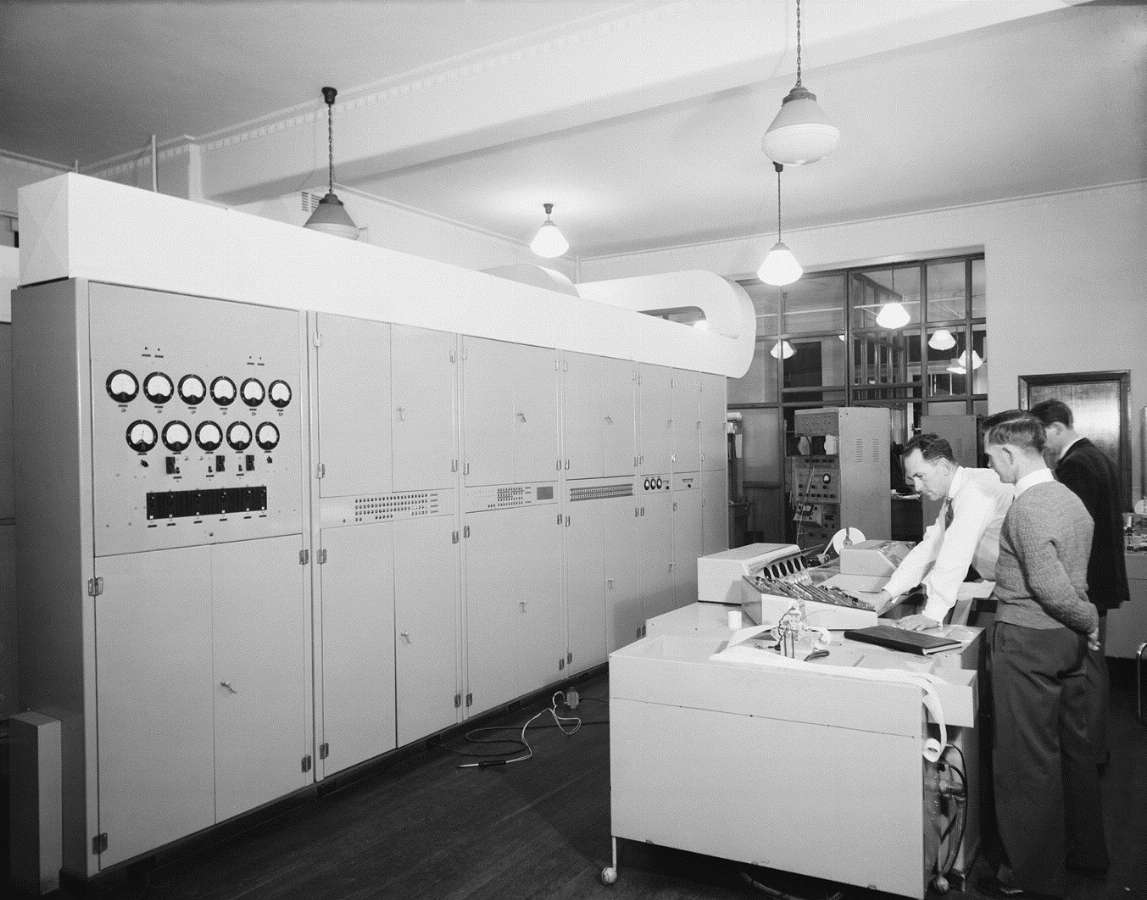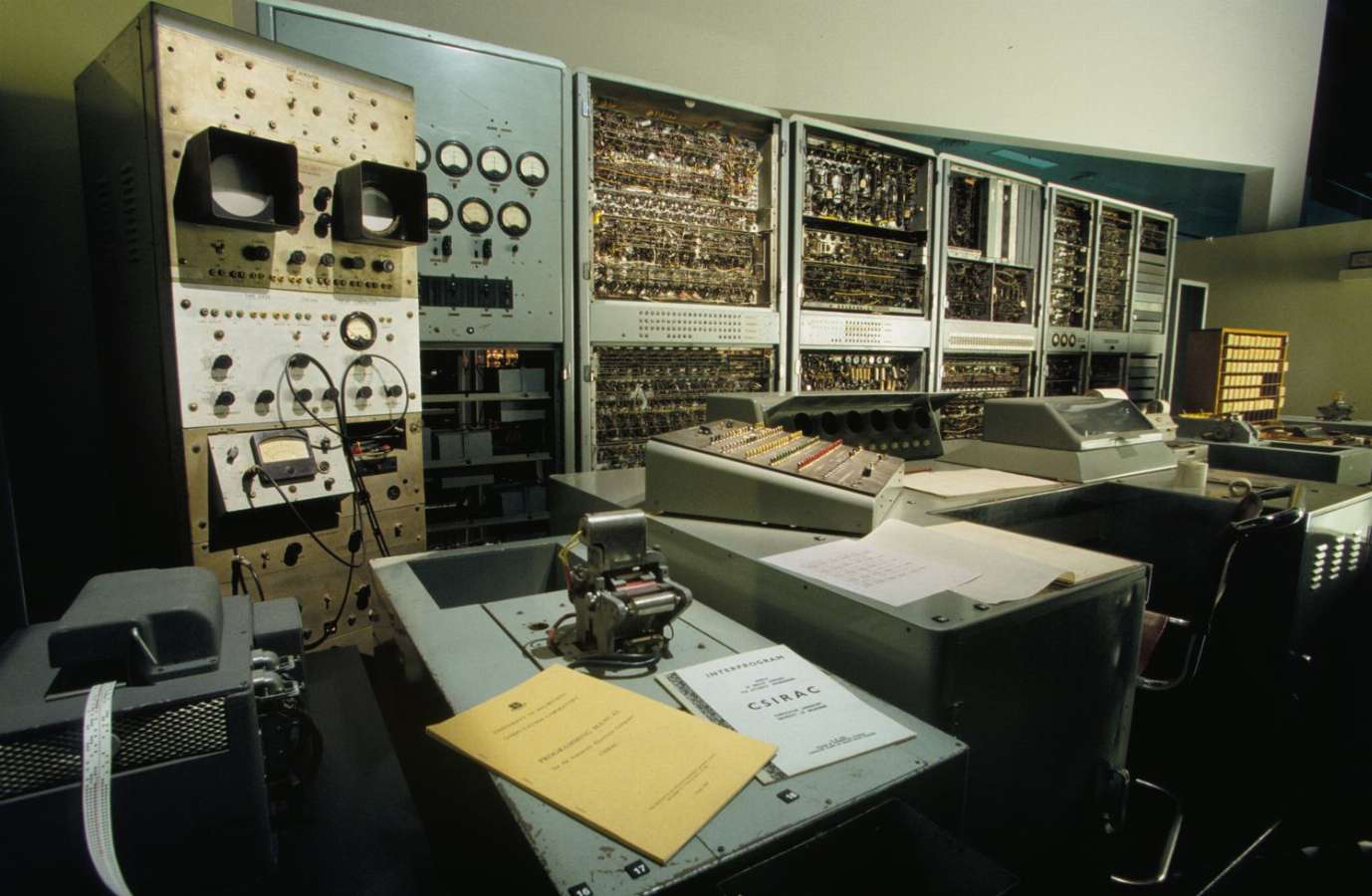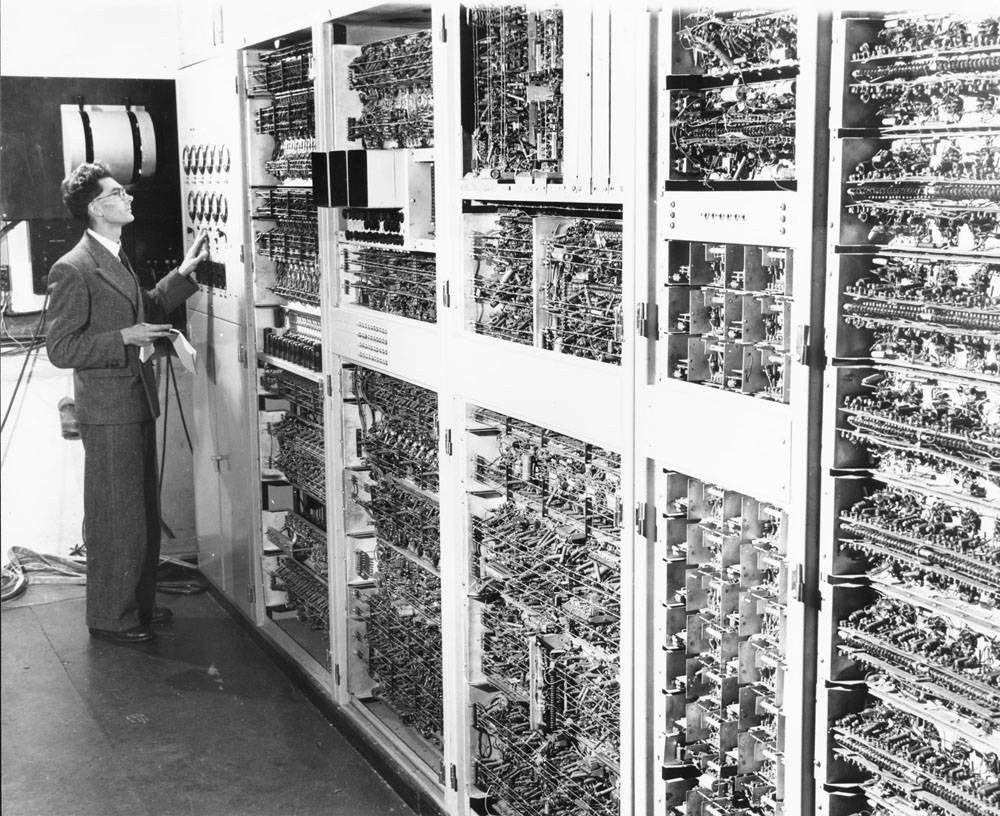CSIRAC Among The First Electronic Stored Program Computers
Photo: Trevor Pearcey in front of CSIR Mk1 in Sydney
In historical terms, CSIR Mk1/CSIRAC was one of the first stored program, electronic, computers.
Prior to 1948 various electromechanical machines (non-electronic computers) were built in USA and Germany. Early electronic, but not stored program machines, were ENIAC (USA) and numerous Colossuses (Colossi?) at Bletchley Park (UK).
The race of the late 1940s
It is generally accepted that the first stored program computer to operate was the Baby at Manchester in mid 1948. (This was the consensus at the 50th anniversary in 1998 where British, Australian and USA historians celebrated these early computers including CSIRAC [1]). The Baby was enlarged into a larger machine by early 1949. One could consider this as a single project or as two different computers.
The second stored program computer - and the first to really do a job of work - was the EDSAC at Cambridge (UK) launched in mid 1949.
The first USA stored program computer was BINAC. BINAC ran test programs through 1949. It was delivered in September 1949. However, when delivered it was not considered a success. See Wikipedia BINAC.
The Australian CSIR Mark1/CSIRAC ran test programs in November 1949. Evidently the power restrictions caused by the 1949 Australian coal strike impeded the development of the CSIR Mark1.
The question of first
 Photo:
CSIRAC at University of Melbourne 1956
Photo:
CSIRAC at University of Melbourne 1956
Some computer historians have suggested that the apparent failure of BINAC means that Australia beat the USA in the race to have an electronic stored program computer. However, if the event of significance is the first test program, then BINAC was ahead of the CSIR Mark1/CSIRAC, even if the BINAC was not ultimately a success. It took another year or so to develop CSIR Mark1 into a fully working machine.
In this context, it is generally agreed that:
- The CSIR Mark1/CSIRAC was one of only a handful of machines which executed a stored program prior to 1950.
- CSIRAC was either the fifth (Baby, Enlarged Baby, EDSAC, BINAC, CSIR Mark1) or the fourth (Baby project, EDSAC, BINAC. CSIR Mark1)
- Australia was the third country to design and build an electronic stored program computer.
Other notable aspects of CSIRAC
CSIRAC was a groundbreaking machine in many respects.
- CSIRAC was the first computer to play electronic music [2]
- CSIRAC was the first computer to do numerical weather forecasting
- CSIRAC was so well engineered that it had a productive working life into the 1960s
- CSIRAC is the only intact first-generation computer surviving anywhere in the world and is on permanent display at the Museum's Victoria Scienceworks. [2]
In comparison to today's computers
 Photo:
CSIRAC
Photo:
CSIRAC
In its day, CSIRAC had awesome power:
- Used 2000 vacuum tubes
- Mercury delay line store
- Held about 2 kbytes of program/or data
- Weighed at about 2 tonnes
- Used about 30KW of power
- Performed ~ 1000 operations/sec (i.e. 0.001 MHz)
References and Further Reading
[1] Thanks to Dr Peter Thorne for his insights. Peter is an eminent historian and researcher in Australian computing, Board Member of the Pearcey Foundation and Honorary Associate at Museums Victoria. Previously, he was Head of the Department of Computer Science at The University of Melbourne and Deputy Dean of the Faculty of Engineering. In industry, Peter was Chair of the Royal Society's Burke and Wills sesquicentenary program and has been a member of numerous State and Federal advisory boards.
[2] Museums Victoria CSIRAC. An excellent background of CSIRAC including building, operating, preserving, programming, music, and historic archive.
[3] University of Melbourne CSIRAC
[4] UK National Museum of Computing - write-up about CSIRAC

